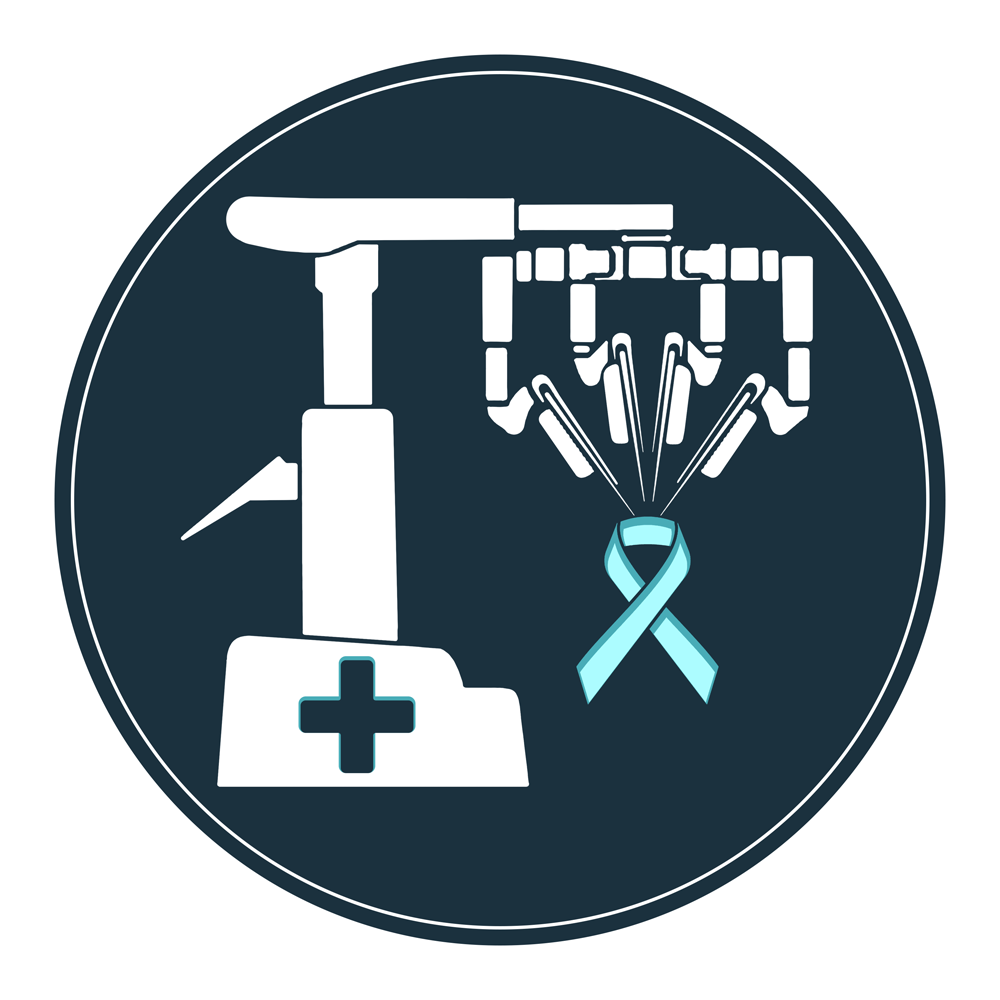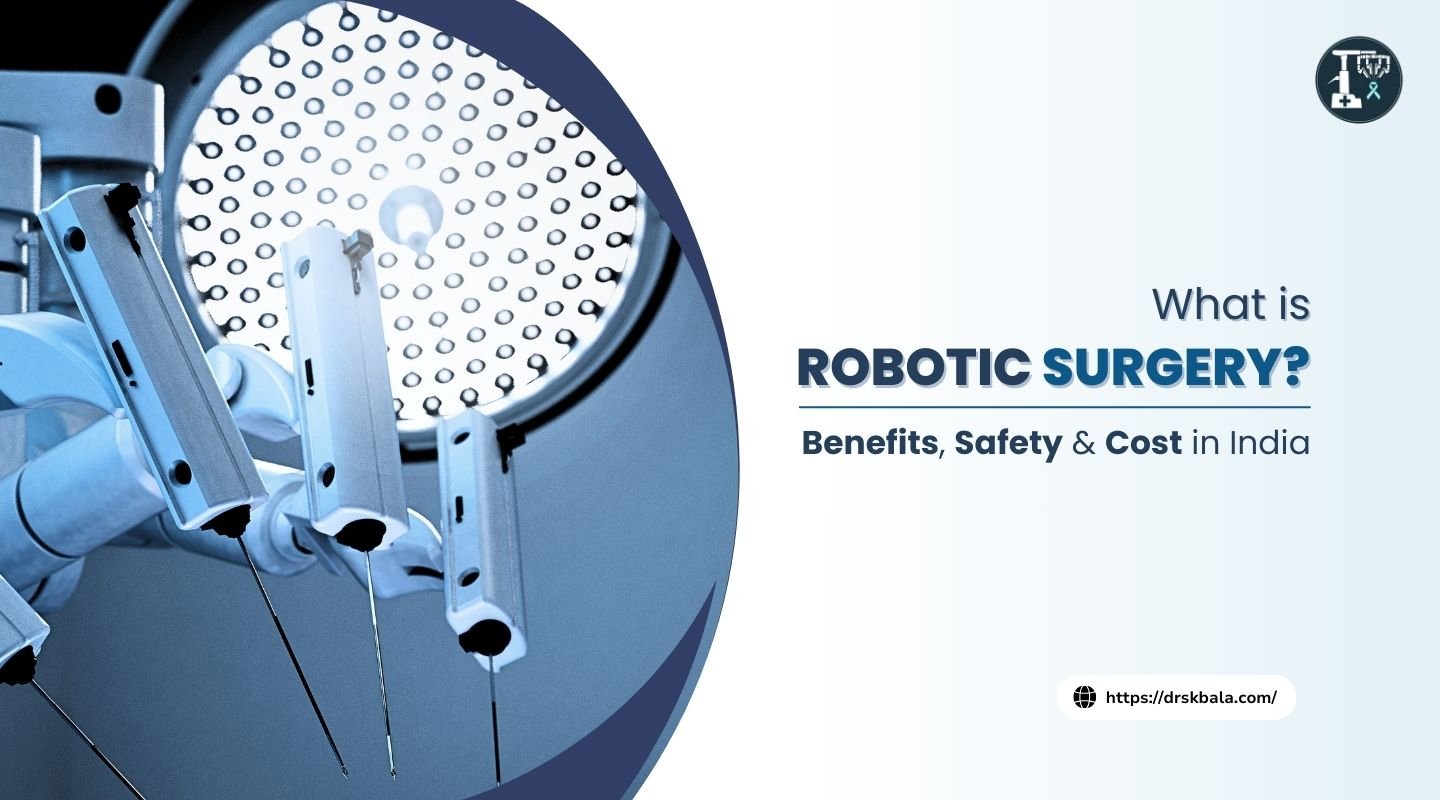Pros and Cons of Robotic Surgery: A Complete Guide
Is Robotic Surgery the Future of Modern Medicine? Over the last few decades, surgical techniques have advanced dramatically—and robotic surgery stands out as one of the biggest breakthroughs for treating conditions like prostate cancer, colorectal tumors, hernias and uterine fibroids. As a minimally invasive approach guided by highly precise robotic systems, it promises faster recovery and improved outcomes for patients.
If you’re considering the pros & cons of robotic surgery and want to understand its true benefits and drawbacks, this comprehensive guide will help you make an informed decision. Let’s break down the advantages and disadvantages of robotic surgery so you know exactly what to expect.
Table of Contents
What is Robotic Surgery?
Robotic surgery represents one of the most significant advancements in modern surgical care. As a surgeon, I can say with confidence that this technology combines the precision of robotics with the critical thinking of an experienced human hand. If you’d like a detailed look at how it works and when it’s used, I recommend reading my in-depth What Is Robotic Surgery? guide.
What are the Advantages of Robotic Surgery?
Robotic surgery combines modern engineering with medical expertise, giving surgeons enhanced control and patients better results. Here’s how:

Precision and Accuracy
Robotic systems give surgeons magnified 3D views and robotic arms with tremor control, enabling micro-level precision. Studies show robotic prostate surgery can achieve up to 95% nerve-sparing success, reducing risks like incontinence. This accuracy is vital in delicate areas where even a millimeter matters. Patients benefit from safer, more predictable outcomes and less chance of surgical errors.
Minimally Invasive Procedures
Robotic surgery uses tiny incisions instead of large cuts. This means less tissue damage, fewer stitches, and smaller scars. For example, robotic gallbladder removal often shortens hospital stays by 1–2 days compared to open methods. A faster recovery means you can return to your daily routine sooner, and feel less pain along the way.
Reduced Blood Loss
Robotic techniques allow pinpoint cutting and cauterization, minimizing bleeding. Data shows robotic kidney surgeries can reduce blood loss by up to 30% compared to traditional surgery. Less blood loss means a lower need for transfusions and faster wound healing. With fewer chances of infection, patients recover faster and more smoothly after surgery.
Enhanced Visualization
High-definition 3D cameras provide a clearer, magnified view of tissues and vessels. Surgeons can spot hidden structures more easily, reducing accidental damage. In robotic colorectal surgeries or gynecological surgeries, better visualization lowers complication rates by up to 20%. This clarity supports precise tumor removal process.
Remote Surgery Capability
Advanced systems make it possible for experts to guide or perform surgeries remotely. While not routine yet, telesurgery trials have shown successful cross-city operations. This means patients in remote areas could access world-class surgeons without traveling far. In the future, this could bridge gaps in specialist care, especially in underserved regions.
What are the Disadvantages of Robotic Surgery?
While robotic surgery has clear benefits, it’s equally important to understand its limitations:
High Costs and Accessibility
Setting up robotic surgical suites requires crores in investment and costly maintenance. This expense often leads to higher treatment fees for patients. Small hospitals or rural centers may lack the budget to offer this option. As a result, not everyone has equal access to this advanced care yet.
Training and Learning Curve
Surgeons need specialized training to master robotic systems and console controls. It can take several months and dozens of procedures to gain full proficiency. A 2023 study found that new robotic surgeons take 15–30 more minutes per operation until fully skilled. Hospitals must invest in ongoing training to maintain safety and efficiency.
Lack of Haptic Feedback
Unlike traditional surgery, robotic systems don’t transmit the sense of touch. Surgeons rely solely on visual cues and instrument resistance. This can make delicate tissue handling more challenging in complex cases. However, newer systems are experimenting with simulated touch to overcome this limitation.
Potential for Technical Failures
Robotic systems, like any machines, can face glitches, power issues, or software errors mid-surgery. Such problems can prolong operations or require switching to manual methods urgently. Well-trained medical teams and smart backup plans are always in place to handle any unexpected issues with confidence. Routine system checks and expert staff ensure surgeries run smoothly and safely for every patient.
Robotic Surgery Pros and Cons: A Quick Summary
|
Advantages |
Disadvantages |
| Unmatched precision and accuracy | High cost of equipment and procedures |
| Minimally invasive with faster recovery | Surgeons need advanced training |
| Better visualization for complex cases | No tactile feedback for the surgeon |
| Less blood loss and lower risk of infection | Possibility of system malfunction |
| Potential for remote surgeries | Limited availability in some regions |
Robotic Surgery in Kolkata

Kolkata is among India’s leading cities for adopting cutting-edge robotic surgery. Dr. S. K. Bala, a renowned robotic surgeon in Kolkata, specializes in minimally invasive procedures for various conditions, including gastrointestinal, hepatobiliary, urological and gynecological surgeries.
Patients benefit not only from Dr. Bala’s extensive experience but also from transparent guidance about robotic surgery costs in Kolkata and personalized treatment plans. His expertise ensures safe surgeries and quicker recovery times for patients across the region.
Is Robotic Surgery Right for You?
Robotic surgery is transforming how complex operations are performed — offering patients better outcomes and surgeons unmatched control. However, it’s vital to weigh the benefits against the costs and ensure you choose an experienced specialist.
If you’re exploring robotic surgery in Kolkata, consult Dr. S. K. Bala to learn how advanced techniques can work for your specific condition.



